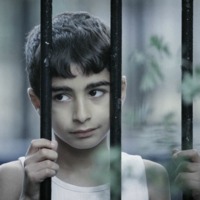
The Letter
The lesson is based around a true story about Nicu, a 9-year-old boy who has been trafficked to the UK. The central focus is a beautiful short film, based on the true narrative, in which Nicu reads an imaginary letter to his mother. Sadly, his descriptions of wealth are far removed from the reality of the violence and exploitation he is subjected to. This is not the ‘better life’ that his parents were promised he would have. He is unhappy, alone, and trapped. The lesson finishes with an engaging music video that focuses on the exploitation of a trafficked child forced to work in a factory.Audio for this lesson plan can be found at https://youtu.be/09QE3RsAge8
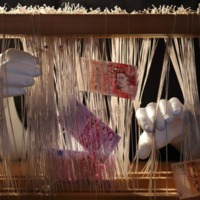
Carpet of Dreams
This lesson examines the use of forced child labour i.e. slavery, in the handmade carpet industry. The initial focus is a true life narrative told by Ravi, who was forced to weave handmade carpets for up to 14 hours a day, starved and not paid. Follow-up videos include an excerpt from the acceptance speech of Kailash Satyarthi, Nobel Peace Laureate, 2014 and an authentic TV interview with a global anti-trafficking academic, Siddharth Kara, who addresses the role of the corporate world and consumer choice. The Good News looks at powerful actions that are being taken to eliminate forced child labour. The teaching material also addresses how we, as consumers of products that may contain forced (child) labour, can use our buying power to send a message to manufacturers in order to effect change.Audio for this lesson plan can be found at https://youtu.be/XupzUpXspDg

Gold Costs More Than Money
This lesson examines the use of forced labour i.e. slavery, in gold mining. It includes a gentle but confronting narrative, a surreal short film by young filmmakers and an audio recording of an engaged couple’s argument. The teaching material also addresses how we, as consumers of products that include gold, such as smart electronics and gold jewellery, can use our buying power to send a message to manufacturers in order to effect change.There are two 55-minute lessons, depending on the level of your students, it is aimed at older teens, young adults and adults, B1+ (upper intermediate to advanced)Materials include The young man on the train (narrative), student worksheet, autonomous learning resources, audio recording, transcript, information about human trafficking and modern slavery, slides, real-life interview with a businessowner, Teacher’s Guide. Audio for this lesson plan can be found at https://youtu.be/Dv53eoT94JA

Cocoa Truth
This lesson examines the use of forced labour, including forced child labour, in the cocoa industry. The content specifically focuses on the exploitation of children in the Ivory Coast. The lesson also addresses how we, as consumers of cocoa-based products, in particular chocolate, can use our buying power to influence chocolate companies.There are two 55-minute lessons, depending on the level of your students, and is aimed at older teens, young adults and adults B1+ (upper intermediate to advanced)Materials include Peter’s story, information about slavery in the cocoa industry, real-life interview with the Director of a shelter for trafficked children, student worksheet, autonomous learning resources, slides, audio recording of Peter’s narrative, Teacher’s Guide. Audio for this lesson plan can be found at https://youtu.be/qLnUMjhZxuA
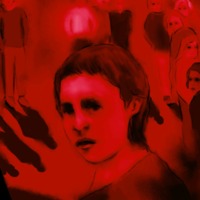
My Future Is My Choice
My Future Is My Choice provides a lesson plan and resources for teaching on forced marriage, child marriage and honour-based violence and the possible long-term consequences of these crimes. We approach this subject sensitively and gently beginning with a powerful true narrative in which child marriage is fortunately prevented. The theme is introduced through artwork, and as the content progresses students learn that this crime is closely tied to control, violence and exploitation. There are two 55-minute lessons, depending on the level of your students and is aimed at older teens, young adults, adults, B1+ (upper intermediate to advanced)Materials include Laila’s story, student worksheet, autonomous learning resources, audio recording and transcript, Shahina’s story: transcript of video narrative, information about human trafficking and modern slavery, slides, Teacher’s Guide.Audio for this lesson plan can be found at https://youtu.be/JkGirIiPGfg
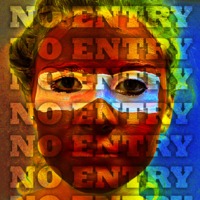
Eyes Wide Shut
Eyes Wide Shut provides a lesson plan and resources for teaching about child grooming.This lesson is about Sarah, a young girl in the UK who was groomed and exploited for seven years. The grooming began when she was aged 10, and then as a 12-year-old,Sarah became a victim of human trafficking for child commercial sexual exploitation(CCSE). The lesson title, EYES WIDE SHUT is a reference to the fact that nobodyseemed to notice – of if they did, no action was taken for several years. This is a true story.There are two 55-minute lessons, depending on the level of your students. The lessons are aimed at older teens, young adults and adults, B1+ (upper intermediate to advanced).Material's include Sarah’s story, information about the grooming process, student worksheet, autonomous learning resources, slides, audio recording, Teacher’s Guide. Audio for this lesson plan can be found at https://youtu.be/4797g8HuMow
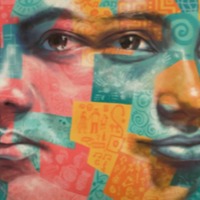
Gideon
There are an estimated 133,000 people living in modern slavery in Ghana (GSI 2018). Ghana remains a source, transit, and destination country for men, women, and children subjected to forced labor and sex trafficking. Ghanaian boys and girls are subjected to forced labor within the country in fishing, domestic service, street hawking, begging, portering, artisanal gold mining, quarrying, herding, and agriculture, including cocoa. Research focused on the fishing industry on Lake Volta indicated that more than half of the children working on and around the lake were born in other communities and many of these children are subjected to forced labor; not allowed to attend school; given inadequate housing and clothing; and are controlled by fishermen through intimidation, violence, and limiting access to food. Boys as young as five years old are forced to work in hazardous conditions, including deep diving, and many suffer waterborne infections. Gideon’s grandparents sent him to a man who promised to take care of him and help him go to school. Instead, the man enslaved Gideon in a fishing boat on Lake Volta in Ghana.
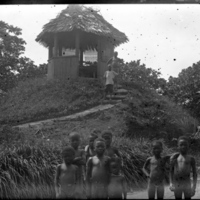
A Group of African Children
A group of African children. This image formed part of the Harris Lantern Slide Collection. Under King Leopold II the Congo Free State used mass forced labour to extract rubber from the jungle for the European market. As consumer demand grew King Leopold II's private army - the Force Publique - used violent means to coerce the population into meeting quotas, including murder, mutilation, rape, village burning, starvation and hostage taking. Alice Seeley Harris and her husband Reverend John H. Harris were missionaries in the Congo Free State from the late 1890s. Alice produced a collection of images documenting the horrific abuses of the African rubber labourers. Her photographs are considered to be an important development in the history of humanitarian campaigning. The images were used in a number of publications. The Harrises also used the photographs to develop the Congo Atrocity Lantern Lecture which toured Britain and the the USA raising awareness of the issue of colonial abuses under King Leopold II's regime. Source: Antislavery International.
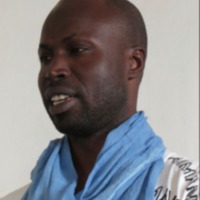
Moutarou
Across Senegal, an estimated 50,000 boys living in traditional Quranic boarding schools, or daaras, are forced to beg for daily quotas of money, rice or sugar by their Quranic teachers, known as marabouts. Known as talibés, these children are sent by their parents to daaras to learn the holy Coran. Children in these daaras are often beaten, chained, bound, and subjected to other forms of physical or psychological abuse amounting to inhuman and degrading treatment. While in 2016 the government introduced a new programme to 'remove children from the streets', it has done little to reduce the alarming numbers of children subjected to exploitation, abuse and daily neglect. Moutarou was sent to be a talibé in Dakar by his father during his school summer vacations. Moutarou was forced to beg for food and money daily and provide the marabout with cash under the threat of violence.
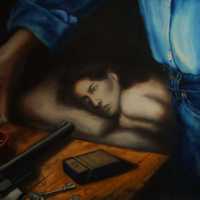
Suzzan Blac
The UK National Crime Agency estimates 3,309 potential victims of human trafficking came into contact with the State or an NGO in 2014. The latest government statistics derived from the UK National Referral Mechanism in 2014 reveal 2,340 potential victims of trafficking from 96 countries of origin, of whom 61 percent were female and 29 percent were children. Of those identified through the NRM, the majority were adults classified as victims of sexual exploitation followed by adults exploited in the domestic service sector and other types of labour exploitation. While a number of victims are trafficked from other countries such as Albania, Romania and Nigeria into the UK, UK residents are also vulnerable to commercial sexual exploitation. Suzzan Blac was born in 1960 in Birmingham to a dysfunctional family in which she experienced physical, emotional and sexual abuse. In 1976 she travelled to London for what she thought was a job interview, after meeting with her employer and having her mother sign a contract and consent form Suzzan thought she would begin a new life in London. However, she was taken to an old hotel building, raped by her employer and multiple other men before being forced, along with other young girls, to perform sexually in front of both a video and still camera. Subjected daily to threats, beatings and rape, Suzzan learned how to numb her mind. At the age of 16 Suzzan was able to escape from her traffickers with the help of one of the men involved in the trafficking ring. However, while she may have been physically free, she felt her mind was still trapped. At the age of 18 filled with guilt, shame and self-blame she sought medical help but was not given the support she needed by doctors who either gave her drugs to numb her feelings or abused her further. It wasn’t until the birth of her daughter at the age of 28 that Suzzan says she began to recognise her past abuse and the understanding of true motherhood. During the years 2000-2004 she was compelled to paint 42 images about her abuse in order to help process her pain and trauma into something tangible. Suzzan did not reveal these paintings for a further 10 years, finally deciding in 2011 that being a survivor was not enough, she wanted to be a voice for other survivors. Suzzan’s work is now exhibited around the world and she continues to be a voice for survivors, using her blog on The Violence of Pornography and her art in seminars to train social workers on child sexual abuse and trafficking.
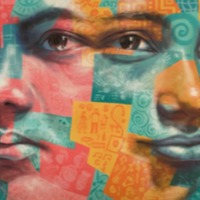
Blu
On any given day in 2016 there were an estimated 40.3 million people in modern slavery across the world, with women and girls accounting for 71% of victims. People looking for work and a better standard of living are often deceived, forced and coerced in to such forms of modern slavery as forced labour, debt bondage, domestic servitude and commercial sexual exploitation. Women and girls made up more than 99% of victims of forced sexual exploitation. Moreover more than 1 million of these victims (21%) were children under the age of 18. Child victims are often difficult to detect by both law enforcement and child protection agents, as such the true figure of children in commercial sexual exploitation is likely to be much higher than the current estimate. Blu was 13 years old when she began seeing an older boy that lived near her school. This boy began forcing Blu to have sex with other men, subjecting her to physical violence when she refused. Though other people in her life – including her mother – knew about her prostitution, no one believed that she was being forced. It was only when she left school at 16 and moved away that she could escape.
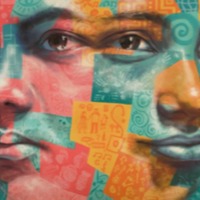
Odeta
Born in Albania, Odeta was trafficked into Italy, where trafficking victims also arrive from Nigeria, Romania, Bulgaria, China, and South America. One NGO estimates that 48 percent of the prostitutes in Italy are from Eastern Europe. Many women are trafficked into richer Western European countries from the poorer Eastern countries, including Albania. The fall of communism in 1991 led to a rise in organized crime in Albania: in 2001 it was estimated 100,000 Albanian women and girls had been trafficked to Western European and other Balkan countries in the preceding ten years. More than 65 percent of Albanian sex-trafficking victims are minors at the time they are trafficked, and at least 50 percent of victims leave home under the false impression that they will be married or engaged to an Albanian or foreigner and live abroad. Another ten percent are kidnapped or forced into prostitution. The women and girls receive little or no pay for their work, and are commonly tortured if they do not comply.

Ajok
Thousands of women and children were taken into slavery during the decades of Sudan’s civil war, mainly from Northern Bahr El Ghazal and the Nuba Mountains. Slave-taking was revived in 1985 by the National Islamic government of Sudan primarily as a weapon against counterinsurgents in the South, and secondarily a way to reimburse its surrogate soldiers for neutralizing this threat. In 1989 the government created the Popular Defense Forces (PDF), militia trained to raid villages and take people as slaves. PDF recruits were allowed to keep whoever they captured, along with booty of grain and cattle. One study documents 12,000 abductions by name, while NGOs offer estimates ranging from 15,000 to 200,000. The slaves were often moved to large towns in the north on week-long journeys during which the women were repeatedly raped, and then sold to new masters who used them without pay for farming and sexual services. The peace process brought these PDF abductions to an end, but inter-tribal abductions continue in Southern Sudan. In addition, Sudanese children are used by rebel groups in the ongoing conflict in Darfur; Sudanese boys from the country’s eastern Rashaida tribe continue to be trafficked to the Middle East for use as camel jockeys; the rebel organization “Lord’s Resistance Army” has forcibly conscripted children in Southern Sudan for use as combatants in its war against Uganda; and the institution of chattel slavery continues in southern Darfur and southern Kordofan.
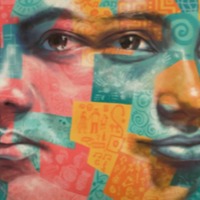
Agor
Thousands of women and children were taken into slavery during the decades of Sudan’s civil war, mainly from Northern Bahr El Ghazal and the Nuba Mountains. Slave-taking was revived in 1985 by the National Islamic government of Sudan primarily as a weapon against counterinsurgents in the South, and secondarily a way to reimburse its surrogate soldiers for neutralizing this threat. In 1989 the government created the Popular Defense Forces (PDF), militia trained to raid villages and take people as slaves. PDF recruits were allowed to keep whoever they captured, along with booty of grain and cattle. One study documents 12,000 abductions by name, while NGOs offer estimates ranging from 15,000 to 200,000. The slaves were often moved to large towns in the north on week-long journeys during which the women were repeatedly raped, and then sold to new masters who used them without pay for farming and sexual services. The peace process brought these PDF abductions to an end, but inter-tribal abductions continue in Southern Sudan. In addition, Sudanese children are used by rebel groups in the ongoing conflict in Darfur; Sudanese boys from the country’s eastern Rashaida tribe continue to be trafficked to the Middle East for use as camel jockeys; the rebel organization “Lord’s Resistance Army” has forcibly conscripted children in Southern Sudan for use as combatants in its war against Uganda; and the institution of chattel slavery continues in southern Darfur and southern Kordofan.Agor was ‘redeemed’ (bought out of slavery) by Christian Solidarity International (CSI), a Zurich-based international human rights organization, in January 2007.
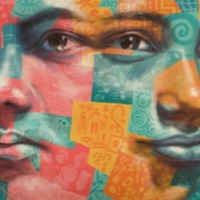
Adelina
Born in Albania, Adelina was trafficked within the country. Many women are trafficked into richer Western European countries from the poorer Eastern countries, including Albania. The fall of communism in 1991 led to a rise in organized crime in Albania: in 2001 it was estimated 100,000 Albanian women and girls had been trafficked to Western European and other Balkan countries in the preceding ten years. More than 65 percent of Albanian sex-trafficking victims are minors at the time they are trafficked, and at least 50 percent of victims leave home under the false impression that they will be married or engaged to an Albanian or foreigner and live abroad. Another ten percent are kidnapped or forced into prostitution. The women and girls receive little or no pay for their work, and are commonly tortured if they do not comply.

Hetty, Esther and Me
Hetty, Esther and Me was an original drama researched, written and performed by Trafford Youth Service and 15 African Caribbean girls from Stretford High School. The play was performed at Quarry Bank Mill, a working Georgian cotton mill on the outskirts of Manchester, owned by the National Trust. The play centred on connections between cotton produced by slaves and child labour in English mills, and the wider social issues of slavery and poverty during the Industrial Revolution. The story was told through the relationship between a slave girl (Hetty), a young mill worker (Esther) and a group of young women living in present-day Trafford.
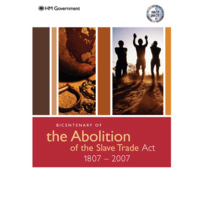
Bicentenary of the Abolition of the Slave Trade Act 1807-2007
The official publication from the British Government in response to the bicentenary included a message from Prime Minister Tony Blair. It set out the history of transatlantic slavery and resistance to it, and featured a calendar of upcoming events for 2007 relating to slavery and abolition. The publication also detailed contemporary efforts to end modern slavery. Later in 2007, 'The way forward: bicentenary of the abolition of the Slave Trade Act 1807-2007' reflected on some of the commemorative activity that had taken place in Bristol, Hull, Liverpool, London and Greater Manchester. With a foreword by the new Prime Minister, Gordon Brown, the theme of the publication was 'Reflecting on the past, looking to the future' and it linked efforts for the abolition of historical and contemporary slavery. The publication also looked to how to tackle inequality and poverty in the UK, Africa and the Caribbean.
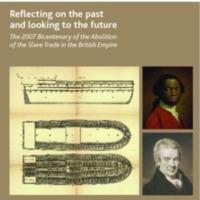
Reflecting on the Past and looking to the future
The official publication to mark the bicentenary from the Department for Culture, Media and Sport (DCMS), setting out the Government response to the commemorations. This included the formation of a 2007 Bicentenary Advisory Group, chaired by the Deputy Prime Minister John Prescott MP, to co-ordinate a national response to the bicentenary and to UNESCO International Slavery Remembrance Day on 23 August. The Group was made up of a number of influential stakeholders to encourage action across the cultural, community and faith sectors and ensure that the bicentenary was made relevant to local communities. Participating organisations included Anti-Slavery International, Amnesty International, the Archbishops Council, Bristol City Council, Churches Together in England, the Equiano Society, the Evangelical Alliance, National Museums Liverpool, National Maritime Museum, Museum of London, the Wilberforce Institute for the study of Slavery and Emancipation and several faith and community leaders.
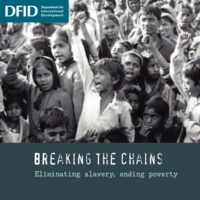
Breaking the Chains: Eliminating slavery, ending poverty
The official publication to mark the bicentenary from the Department for International Development, with a particular focus on the links between poverty and forms of modern slavery around the world.
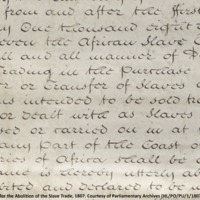
Young Runaway Slaves
An exhibition at the Victoria and Albert Museum of Childhood in London focused on the experiences of young runaway slaves in Britain. The exhibition focused in particular on the story of Ignatius Sancho, born in 1729 on board a slave ship, who ran away from his owners in Greenwich. Sancho's letters, later published, became an inspiration for those who campaigned for abolition.